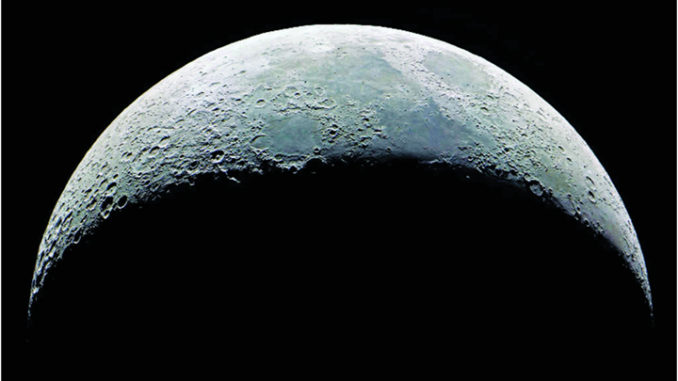
The moon is about to get walloped by 3 tons of space junk, a punch that will carve out a crater that could fit several semitractor-trailers. The leftover rocket will smash into the far side of the moon at 5,800 mph (9,300 kph) on Friday, March 4, away from telescopes’ prying eyes. It may take weeks, even months, to confirm the impact through satellite images. It’s been tumbling haphazardly through space, experts believe, since China launched it nearly a decade ago. But Chinese officials are dubious it’s theirs. No matter whose it is, scientists expect the object to carve out a hole 33 feet to 66 feet (10 to 20 meters) across and send moon dust flying hundreds of miles (kilometers) across the barren, pockmarked surface. Low-orbiting space junk is relatively easy to track. Objects launching deeper into space are unlikely to hit anything and these far-flung pieces are usually soon forgotten, except by a handful of observers who enjoy playing celestial detective on the side. SpaceX originally took the rap for the upcoming lunar litter after asteroid tracker Bill Gray identified the collision course in January. He corrected himself a month later, saying the “mystery” object was not a SpaceX Falcon rocket upper stage from the 2015 launch of a deep space climate observatory for NASA. Gray said it was likely the third stage of a Chinese rocket that sent a test sample capsule to the moon and back in 2014. But Chinese ministry officials said the upper stage had reentered Earth’s atmosphere and burned up. But there were two Chinese missions with similar designations — the test flight and 2020’s lunar sample return mission — and U.S. observers believe the two are getting mixed up. The U.S. Space Command, which tracks lower space junk, confirmed Tuesday that the Chinese upper stage from the 2014 lunar mission never deorbited, as previously indicated in its database. But it could not confirm the country of origin for the object about to strike the moon. “We focus on objects closer to the Earth,” a spokesperson said in a statement.
Gray, a mathematician and physicist, said he’s confident now that it’s China’s rocket.
“I’ve become a little bit more cautious of such matters,” he said. “But I really just don’t see any way it could be anything else.”
Jonathan McDowell of the Harvard and Smithsonian Center for Astrophysics supports Gray’s revised assessment, but notes: “The effect will be the same. It’ll leave yet another small crater on the moon.”
Source: AP




Be the first to comment